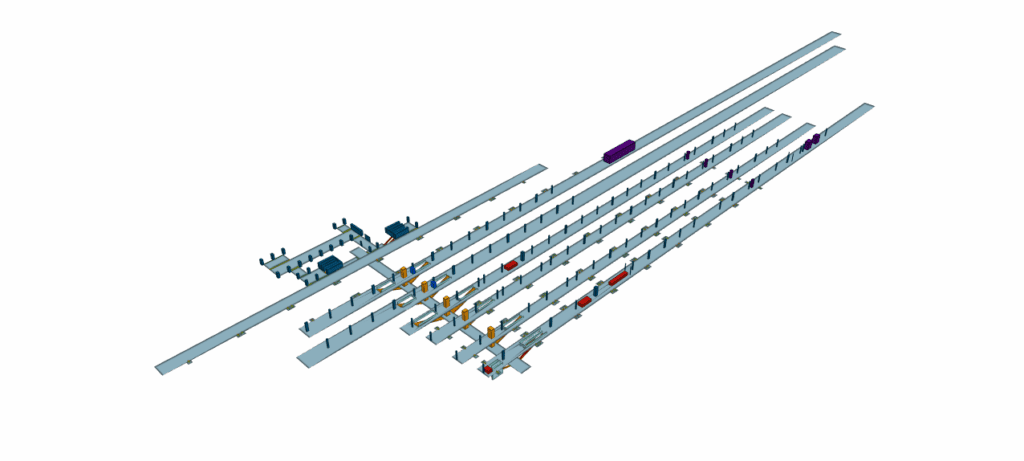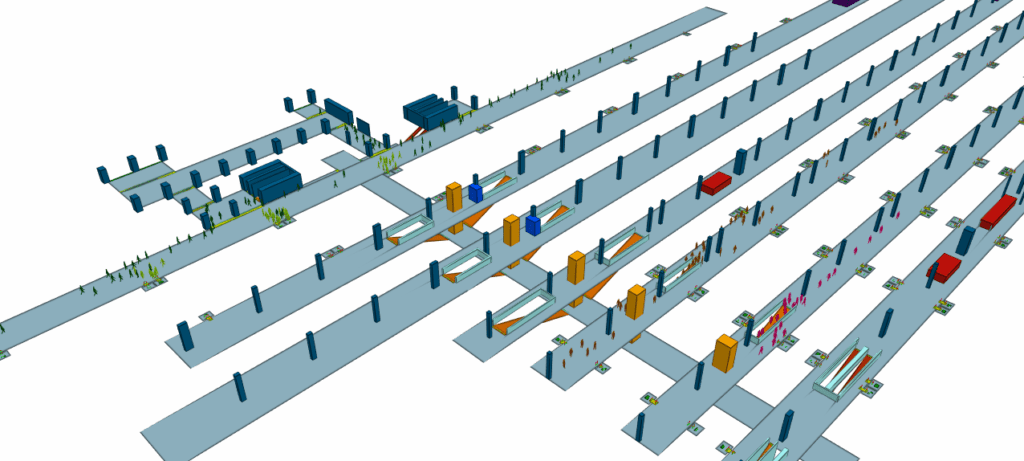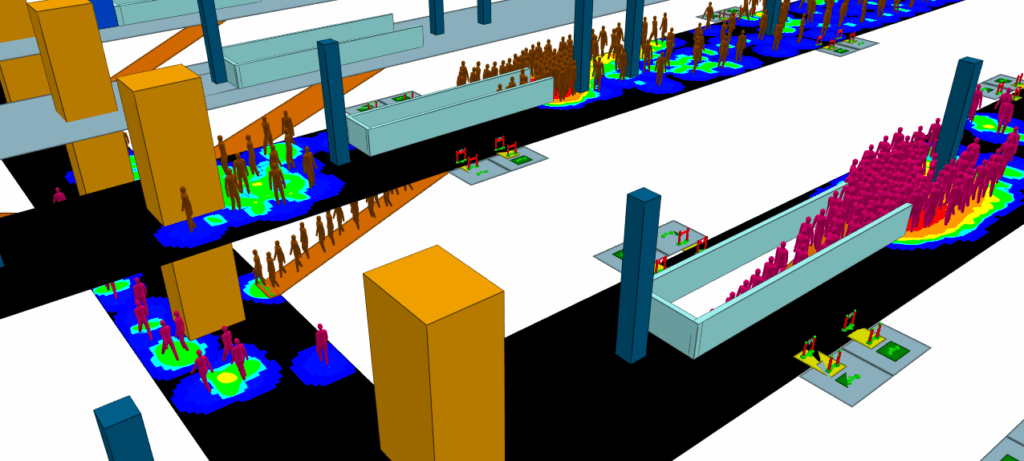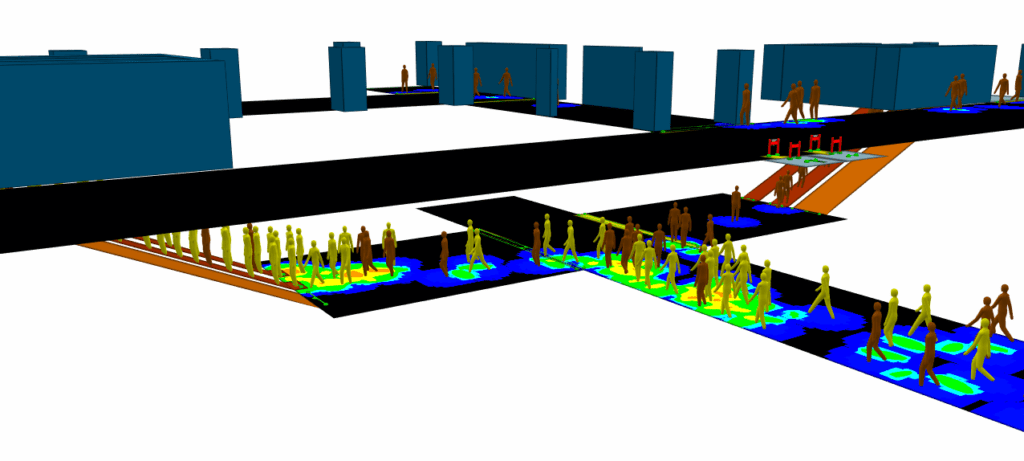Software Used on this Project
Project Overview
When designing buildings, there are two main areas that are of high importance, one being relevant pedestrian flows in buildings like shopping centers, stadiums, theaters, the second being people transfer in buildings like stations and airports. ESTECO, in partnership with LIFT (Railway and Traffic Engineering Laboratory S.r.l.), studied a prominent railway station node in Rome, for its specific characteristics: a high volume of arriving and departing pedestrian flows and interchanging flows amongst different railway passenger services operating on various platforms. By using pedestrian experience design software Oasys MassMotion, alongside the optimisation tool modeFRONTIER, developed by ESTECO and according to LIFT expertise in the transport field, the designers were able to optimally size pedestrian transit spaces. 
How Oasys proved invaluable
By using MassMotion alongside modeFRONTIER, the designers managed to combine pedestrian microsimulation with an optimisation procedure to search for the optimal space of two identified station bottlenecks while guaranteeing a specific level of service performance.
The four-step approach provides a fast and flexible way to optimise pedestrian experience at the design stage.
Create | Simulate | Analyse | Revise
- Create
The model was created from scratch in MassMotion using the user interface. Thousands of simulations were run and the same model was used for each simulation run whilst modeFRONTIER was used to change the input parameters each time.

- Simulate
More than 5000 simulations were run in parallel on four virtual machines, each of them dedicated to a single run of the corresponding MassMotion model, created using the different values of input parameters. The integration of the two tools enabled for the automatic exploration of a variety of infrastructural configurations and traffic conditions in less than 10 hours. This saved time as the manual launch of all corresponding simulations would have required several days of work.
- Analyse
The MassMotion Software Development Kit (SDK) provided a major opportunity to easily integrate pedestrian simulation with modeFRONTIER optimisation capabilities and change different simulation parameters in a dynamic way. This feature, together with the great help of Oasys technical support team, allowed setting automations to vary the characteristics of simulation scenarios, overcoming the need of manually operating through the graphic user interface. ModeFRONTIER automated the simulation processes and permitted the exploration of the design space of input variables in search of optimal solutions. Out of the high number of output parameters offered by MassMotion, LIFT selected the most significant ones in line with the goal of the study.


- Revise
The graph below shows a maximum pedestrian flow for each minimum area that was tested. Each maximum pedestrian flow was tested in compliance with the performance constraints that were imposed on traffic conditions. The maximum pedestrian flow outputs obtained from the graph helped in determining the impacts of a possible increase in traffic volumes.
The graph also helps to highlight that the minimum area required to ensure an adequate egress of pedestrians. Therefore, any station configuration considering larger areas, has the potential to offer further improvement of traffic conditions or, conversely, a surplus of transit areas that can be used for alternative purposes.

The integration between the MassMotion SDK and modeFRONTIER software was used with a “What-to” approach to automatically explore a great amount of design configurations, with the aim of searching for the best solution that ensures pedestrian movement inside buildings and the adequate dimensioning of walking spaces. Notably, the proposed methodology is able to suggest the minimum value for the latter, increasing the areas available for other destinations of use.
ESTECO is an independent software company, highly specialised in numerical optimisation and simulation processes and data management. With more than 20 years of experience, ESTECO supports over 300 international organisations in excelling in their digital engineering experience, accelerating the decision-making process and reducing development time.
With 15 years of experience and projects in 28 countries, LIFT (Railway and Traffic Engineering Laboratory S.r.l.) is specialised mainly in the analysis and simulation of transport phenomena in the railway operations, intermodal transport, traffic management and control, and pedestrian dynamics industries.
In the context of a structured collaboration running since 2016 between the two companies, a variety of issues referring to different transport modes were faced together in an innovative way for this project.
Oasys would like to thank ESTECO and LIFT for sharing this work with us.
Find out more about Oasys MassMotion here.
